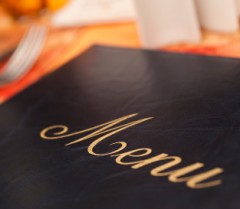The Simple Way To Minimize Buyer’s Remorse
Guest post by John Carvalho
 Who hasn’t had buyer’s remorse? That post-purchase anxiety about a decision is all too common. Did we pick wisely? Should we have spent more? Or less? What about the item we could have bought but didn’t – once we make a decision, the “grass is greener” effect kicks in and we question our choice.
Who hasn’t had buyer’s remorse? That post-purchase anxiety about a decision is all too common. Did we pick wisely? Should we have spent more? Or less? What about the item we could have bought but didn’t – once we make a decision, the “grass is greener” effect kicks in and we question our choice.
The good news is that scientists studying “choice closure” have found that encouraging specific post-purchase behaviors can minimize buyer’s remorse and maximize satisfaction with the decision.
Closing the Menu
A study that will appear in the Journal of Consumer Research examined behavior in a restaurant setting. It found that the very act of closing the menu and returning it increased the customer’s eventual satisfaction with their food choice. Why did this physical act of simply removing other choices from view increase choice satisfaction? Let’s back up for a second and consider a powerful quirk of human behavior.
Heavy Metaphors
Current research on metaphor and cognition has suggested that people understand and experience abstract concepts through concrete physical experience. For example, holding a heavy object can actually signal related conceptual knowledge around touch and weight. Because weight and seriousness are metaphorically connected, rating the same job applicant’s resume while it’s attached to a heavier clipboard actually cues a more serious (“weightier”) perception of that applicant. Essentially, we find a similar idea to hold true here in the decision-making process. Physically “closing off” a choice allows us to feel emotional closure.
This is easy enough to enable if you are running a restaurant – don’t leave menu cards on the table. Instead, use folder-style menus that will be closed and collected.
Achieving Closure
But what if your business is online? How can you create a purchase experience that allows customers to feel that their decision to purchase has been completed? Could a shopping site show customers with their recently viewed (but not purchased) items and have them consciously click through and discard them as a final step before paying? Abandoned shopping carts are the scourge of ecommerce sites – would this approach increase or decrease orders that are never finished? It’s another step (never a good thing in a sales funnel), but it might reduce hesitancy to complete the order process.
During an in-person sales pitch, could physically removing objections/alternatives from view once they’ve been eliminated facilitate a successful close?
Resolving the Paradox of Choice
The range of choices to offer customers remains a challenge for marketers. On one hand, choice paradox research suggests that when people have a large number of choices, their satisfaction diminishes. (And, actual sales can go down – see More Choices, Fewer Sales.)
On the other hand, behavioral research suggests that consumers like the feeling of having a large number of choices. This new study offers a way to bridge the gap – offer your customers choices, certainly- but be constantly on the look out for subtle acts of closure that will help your consumers reassure themselves that they have made the right decision. They’ll be happier, and so will you.
Do you have a clever way of achieving “choice closure” in your business? Share your ideas in a comment!
